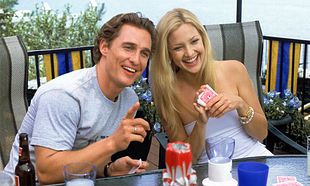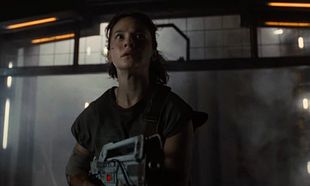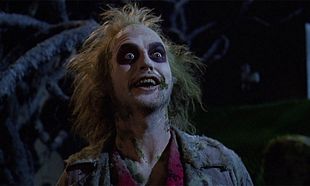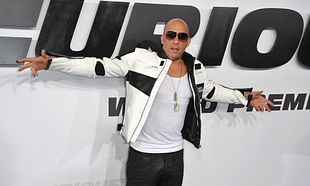With 'F9' racing over buildings, slamming its brakes, then pulling a handbrake turn into cinemas next month, the 'Fast & Furious' franchise is well into its autumn years.
What began as a trifling rehash of 'Point Break' turned quickly into a stunt-laden super-spy franchise, then turned again into a soap opera telenovela with people from the dead returning, amnesia, and a rotating cast of characters.
Yet, through all of these changes, one thing remains - Vin Diesel lowering his jaw and uttering the world 'family' right down the lens again and again without a hint of cynicism in his baritone voice. So how do you rope all nine movies together? Where does 'Tokyo Drift' land in the proceedings? What about it's complicated (not really) timeline? Will Han ever get his justice?
Rev your engines and check your tyres, because we're about to drive wildly into traffic.
8. '2 Fast 2 Furious'
John Singleton's career was always an intriguing one. Being the first African-American and the youngest person to be nominated for a Best Director Oscar was always going to put pressure on his work after 'Boyz N The Hood'. The follow-up, 'Poetic Justice', was much softer and gentler, and had a real sense of romance and artistry to it. Yet, in 2000, Singleton shifted to 'Shaft' - a gloriously OTT sequel of the '70s blaxploitation original. In 2003, Singleton got behind the wheel of '2 Fast 2 Furious' and almost drove the franchise into a wall.
Singleton had no hand in the script and it shows. Not only that, Vin Diesel had walked away from the franchise just as it was beginning to take shape to make 'The Chronicles of Riddick'. The script is as bland as it gets, barely reaching for anything other than just generic cop thriller stuff, but what makes '2 Fast 2 Furious' so bland is just how forgettable it all is. The opening race, for example, looked like it was copied straight from an episode of 'Speed Racer'. Not only that, street racing was already becoming passé by 2003.
7. 'The Fast and The Furious'
Yes, the one that started it all. Yes, we're putting it way down the list. Why? Because just because it's the one that started it all doesn't mean it's anything close to being its best. If anything, when you compare it to where it's at now, 'The Fast and The Furious' feels incredibly low-stakes.
They're literally stealing DVD players, for crying out loud. Sure, the soundtrack was chock full of early millennium clangers and the staging of it all is just cheap as chips, but there's an enthusiasm to it from the cast that hasn't been replicated. That's a good thing, though. You could never really buy Vin Diesel as a young racer; he always had to be the older, more burnt-out kind of father-figure. Paul Walker, sure, it made sense for him to be this wide-eyed type because he's the audience stand-in.
At the time, street racing was having its moment and 'The Fast & The Furious' helped accelerate it (sorry) into the mainstream. The ridiculous-looking cars caught the attention of petrolheads, while the stuntwork was enough to keep action movie lovers in their seats for the duration. Looking back on it now, it's almost quaint compared to the insanity of 'Fast Five' or the sheer lack of respect for the laws of physics in 'Furious 7'.
6. 'Fast & Furious'
Do you call it a gear shift? No, it's more like a gear crunch. You had all the original cast back together, with Vin Diesel and Paul Walker back in their respective driving seats. Michelle Rodriguez was also back in the action, and it tried to put some kind of shape on the whole thing. Did it work? Yes and no. Yes, it worked in that there's now a decent chronology to thing, but no, it didn't have the same oomph as any of the other ones. In fact, 'Fast & Furious' may have been a soft reboot, but what came after it - 'Fast Five' - was the hard reset it needed. Think of 'Fast & Furious' more of a gear change.
Wow, that's a laboured metaphor.
5. 'The Fast & Furious: Tokyo Drift'
Credit where it's due to the 'Fast and Furious' franchise, but there's one thing it can't be accused of and that's not trying things out. After the piss-poor '2 Fast 2 Furious' and the waning interest in street racing, the producers opted to rip the whole thing out of the US and drop the story into Japan and specifically the burgeoning drift scene.
Drifting is, of course, not exactly exciting to watch unless you're into that kind of thing, but director Justin Lin was able to make something out of it. On top of that, 'Tokyo Drift' also brought in fan favourite Han, played by Sung Kang. In fact, Han's fandom was so effective that they managed to get the character written back into the franchise again and again.
4. 'The Fate of the Furious'
Of all the people you'd have figured would end up in a 'Fast & Furious' movie, Dame Helen Mirren and Charlize Theron would not have made the list ten years ago. Never mind ten years ago, try five years ago. Yet, we now live in a world where you've got actual thespian actors more than happy to strap themselves into high-powered supercars and rattle off the most ridiculous dialogue. How? Why? When did this all happen?
It's not important, of course. 'The Fate of the Furious' - note the Fate and it being the eighth movie, too - isn't the best of the latter franchise, but it's certainly one that knows where it's at and what it needs. Dwayne Johnson casually pushing away a submarine torpedo? Of course. After all, the 'Fast & Furious' has by this stage migrated fully from being about street racing to being a juiced-up, roided-out spy action franchise. It can't NOT afford to have Dwayne Johnson pushing ballistic missiles away from him with his bare hands.
3. 'Furious 7'
Leaving aside the passing of Paul Walker for a moment, 'Furious 7' featured one of the most ridiculous-looking stunts in the franchise's history. They drove their cars out of a military jumbo-jet. Let's state that again. They drove their cars out the back of a jet and deployed parachutes on the way down. Does it matter why they did that? Was there a far more logical idea to hand than this? No, and yes but who cares?
'Furious 7' does share the uncomfortable burden of being Paul Walker's final movie, and it's a credit to the effects work of Weta Digital - which helped produce the groundbreaking work for 'Lord of the Rings' - that Walker's exit was handled as carefully as it could have been. The final moments and the last ride are as emotional as anything in the franchise.
2. 'Fast & Furious 6'
After the huge shift in 'Fast Five', the sixth entry was the one where it settled into the groove. Bringing in Luke Evans to play a literal moustache-twirling supervillain who uses a tank to redecorate a motorway, you also had soap-opera levels of hilarity with Michelle Rodriguez's character having amnesia and working for the bad guys. Also, let's talk about that airstrip chase at the end.
If you calculate out the relative speeds of both the airplane, the cars, the length of the chase itself, you get a runway that has a length of 18.5 miles, or 97,680 feet. The Antonov AN-255 - the plane featured in the scene, and coincidentally, the largest aircraft in the world - normally requires a runway length of at least 9,000 feet to take off and around 11,000 feet to land. Again, using the distances and speeds calculated, the runway in 'Fast & Furious 6' was 97,680 feet. So, uh, yeah, physics aren't a big thing in this movie franchise.
1. 'Fast Five'
Far and away, 'Fast Five' is the best of the franchise. Think of where it began, with cheap-looking cars spinning wheels around corners in Los Angeles. Now look at 'Fast Five'. You've got two cars hurtling around Rio de Janeiro while using a vault as a slingshot to smash up other cars and buildings. The movie opens with them stealing high-performance cars - a Ford GT40, a DeTomaso Pantera - out of a high-speed train in the middle of the desert. That heist ends with them driving a Chevy Corvette off a bridge and into a body of water, from which they emerge unscathed and without so much as a bruise.
Reality was always a remote concept in this franchise, but in 'Fast Five', it decided quite early on that it was going to have no place. Instead, it followed the idea of stringing together insane stunts with a relatively simple story. The car culture beginnings always had a finite amount of road, but in 'Fast Five', the franchise came into its own and the rubber hit the road.








































































